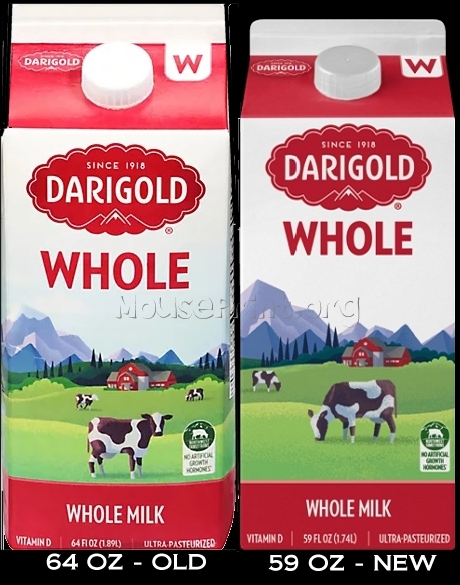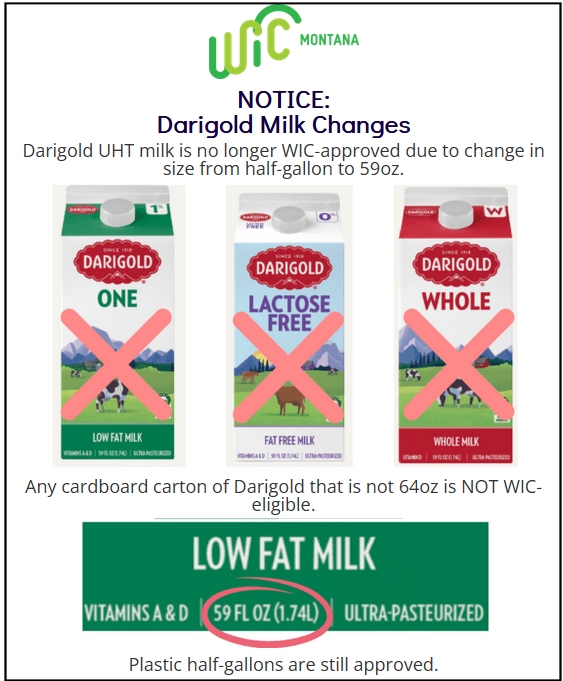Over the last few years, specialty milks like A2 milk, ultra-filtered milk like Fairway, extra protein milk, and plant-based products like soy and almond milk often started coming in unconventional size cartons like 52 or 59 ounces. But regular milk has reliably been sold only by the quart, half gallon, and gallon. Not anymore.
In a reversal of a standard that many thought was sacrosanct, one dairy cooperative in the Pacific Northwest has done the unthinkable. They downsized their half-gallon cartons of regular ultra-pasteurized milk to just 59 ounces.
*MOUSE PRINT:

Darigold’s cartons of “classic” whole, 2-percent, 1-percent, and fat-free milk all are now five ounces less. And the dimensions of the new cartons look virtually identical to the old ones, best we can tell, but for being less than a quarter of an inch shorter. Of course that raises the question of possible slack-fill.
How are customers reacting? We think most have not noticed the change. One of our readers, Katie G., said she was alerted to the change because some stores in her area have posted signs warning that the new smaller milk containers don’t qualify under their state’s WIC program for low income folks with children.

And some consumers are telling the company on its website they are not pleased.
*MOUSE PRINT:
Putting the screws to us milk drinkers! Went to buy a half gallon, nope! 59 ounces! Are you nuts? I switched brands for the first time in 30 years!
On reddit, hundreds of shoppers complained, saying things like:
I just let them know why I will no longer be purchasing their products…
Since it used to be a true half gallon, and it’s next to other half-gallon brands in the same container at the store, most consumers would never know the difference. Pretty clever. I’m glad it’s backfiring on them.
Where are the yellers and screamers to protest Darigold on behalf of WIC participants? This makes me angry and I can easily never buy darigold again.
We asked the company to explain why they downsized, how they have responded to complaints, whether they lowered prices to compensate for the lessened quantity, etc. A company spokesperson replied, in part:
We made this change in packaging size at the beginning of the year largely as response to higher production costs for ESL [ultra-pasteurized] milk. Rather than passing along the full impact of inflation to consumers, we opted to make the container slightly smaller and take a smaller price increase.
He also noted that their regular milk sold in conventional translucent plastic containers was still the traditional size.
The question is, what’s next when it comes to shrinkflation? Eleven eggs in a carton?



